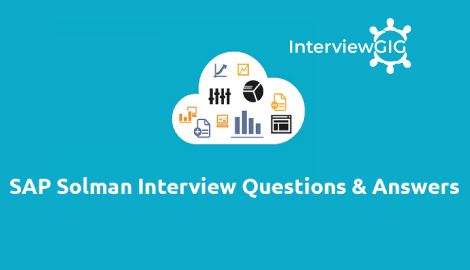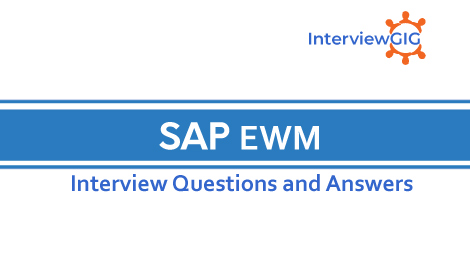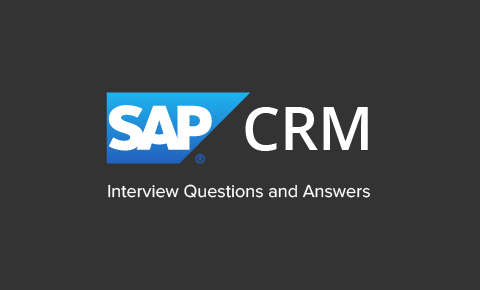What is SAP PI/XI?
SAP Process Integration is part of SAP NetWeaver platform and in NetWeaver 7.0 ehp2 and older versions it is called SAP NetWeaver Exchange Infrastructure XI. SAP NetWeaver Process Integration is part of NetWeaver software component and is used for exchange of information in company’s internal system or with external parties.
SAP PI/XI enables you to set up cross system communication and integration and allows you to connect SAP and non-SAP systems based on different programming language like Java and SAP ABAP. It provides an open source environment that are necessary in complex system landscape for integration of systems and for communication.
SAP Process Integration is a middleware to allow seamless integration between SAP and non-SAP application in a company or with systems outside the company.
Why do we need SAP PI system? What are the key capabilities provided by PI system?
In an organization, SAP ERP doesn’t contain a single system but consists of number of integrated systems like SAP CRM, FICO, EWM, etc. SAP PI provides a platform as single point of integration for all systems without touching complex legacy system for all data and information exchange.
These are the key capabilities that are provided by SAP Process Integration
Connectivity − Using SAP PI, you can connect different applications and systems that has different technical way of communication. It provides you with variety of adapters that allows you to connect applications based on different protocols like HTTPS or Remote Function call RFC.
Routing − Routing define the rules for flow of messages between different systems at run time.
Mapping − As SAP PI is used to connect different applications or systems in a distributed environment that can be set up between different companies so there is a possibility that structure of data exchange between two components differs from each other.
Explain the architecture and different components in PI system?
SAP PI architecture consists of multiple components which are used at design time, configuration time and run time. In SAP PI, sender system is known as source and receiver is called as target system and architecture is known as Hub and Spoke structure. The Spoke is used to connect with external systems and hub is used to exchange messages.
SAP PI system is divided into following components −
- Integration Server
- Integration Builder
- System Landscape Directory SLD
- Configuration and Monitoring
What is the use of Runtime workbench in PI system?
This is a tool used to provide central monitoring of PI components and messages.
What is the use of Integration server? What are the components in Integration server?
This is one of the key component of SAP PI system and is used for processing of messages. It consists of three engines −
- Business Process Engine
- Integration Engine
- Central Advanced Adapter Engine AAE
What is synchronous and asynchronous message in SAP PI system?
Synchronous message is defined as message contains both the request-response part.
Asynchronous message is defined as message contains either request or the response part only.
What is the use of Adapter engine AAE in PI system?
As Integration engine handles messages in XML and SOAP protocol so if business system doesn’t contain data in specific format, Adapters are used to convert the messages specific protocol and message format required by integration engine.
What do you understand by single stack system?
In latest releases when SAP PI moved to single stack system, these two ABAP adapters are also moved to Java stack adapters and new engine is known as Advanced Adapter Engine AAE.
What is the use of Enterprise Service Repository?
This is used to store design time repository objects like mapping, interfaces and process definitions in PI system.
What is the use of System Landscape directory SLD?
This directory contains the information about landscape and software component versions. An SAP system can be configured to register under SLD.
Which SAP PI user interface tools you have used?
You can use different SAP PI user interface tools to access different components of SAP PI system architecture. Most common UI tools are −
ES Builder − This tool provides Java user interface for working in Enterprise Service Repository ESR.
SAP NW Developer Studio − This is Java Eclipsed based tool to view and edit some object types in Enterprise Service Repository.
Integration Builder − This tool provides Java based user interface to work in Integration directory.
What is the use of Integration directory?
Integration directory is used for the configuration of objects that are created in Enterprise Service Repository and configuration is executed by integration engine at run time. To configure ESR objects, you need to import object – Service and Communication channel.
What are the different configurations that can be done in Integration directory?
In Integration directory, you can make four types of configuration −
- Sender Agreement to determine how the message is transformed by Integration server.
- Receiver Determination is used to determine information of receiver to whom message to be sent.
- Interface Determination is used to determine inbound interface to which message to be sent and interface mapping for processing the message.
- Receiver agreement define how message is transformed and to be processed by receiver.
Which components you can configure and monitor under Configuration and Monitoring option?
Using Configuration and Monitoring, you can monitor these functions −
Component Monitoring − To monitor different SAP PI Java and ABAP components.
Message Monitoring − To monitor the status of message processing in a SAP PI component.
Performance Monitoring − Using runtime workbench you can monitor different performance measures in a SAP PI system. You can create various aggregation reports.
End to End Monitoring − To monitor end to end lifecycle in SAP PI system for a scenario.
Message Index Search −You can perform Index based message search in message monitoring and you can also search based on adapter specific selection, etc.
Alert Inbox − Alert inbox is as per role assigned to a business user and is used for viewing all the alerts in SAP PI system as per configuration.
Alert Configuration − Alert framework in C&M allows you to report all the errors during message processing in ABAP and Java. Using alert configuration, you can define policy if an alert has to be reported for error and to perform analysis or not.
Monitoring of runtime cache − This is used to view objects in runtime cache.
What is Synchronous communication under SAP PI communication?
In a Synchronous communication, it is invoked by request and response operation and process output is returned immediately after the operation. In general terms, you can say that a synchronous scenario when a sender process sends a request to receiver and waits for a response. If an error occurs at receiver side, sender application is responsible for sending the message again.
In this approach, there is a possibility that sender might resend message after time out and duplicate message may exist. This approach in PI is known as BE Best Effort.
What are the benefits of using Synchronous communication?
There is no need to configure response message routing.
There is no need to correlate response to a request.
In this communication, response is received immediately.
Where do you prefer Synchronous communication method in PI system? Any example?
This is suitable for operations that involve read operations.
Example − viewing a purchase order.
What are the disadvantages of using Synchronous communication?
In case of a failure, sender needs to send a message again.
Receiving system should be configure to check duplicate messages.
In this scenario, sender application is blocked till a response is received or a time out error occurs.
You can’t configure multiple receivers.
What is asynchronous communication under SAP PI communication?
In an Asynchronous communication, you add an intermediate system or a middleware between two systems. When a Sender application sends a request, it does not wait for the Receiving application to send the response. If there is a failure due to some reason, the middleware is responsible for re-sending the message. If required, the receiving system can send a response back to Sender as a separate asynchronous call.
Where do you recommend of using asynchronous communication under SAP PI communication?
This is recommended for modify operations like creating a purchase order or modify a purchase order.
What are the advantages of using asynchronous communication?
In case of failure, SAP PI system ensures the guaranteed delivery and will resend the message.
No configure required for duplicate checks.
You can configure multiple receivers in this scenario.
Both sender system and receiver system need not be online at same time.
PI logs all the messages send via asynchronous communication.
No time out as intermediate system keeps the message and response request.
What are the drawbacks of using asynchronous communication?
In this scenario, sender needs to correlated responses to request on its own.
Response message needs to be implemented and routed separately.
It doesn’t provide an immediate response.
How to transfer software components in SLD?
When you install system landscape directory, initial catalog is installed.
From SAP Market Place, you can import more up to date catalog.
You can also import your own software components and products depending on the project and integration scenario.
What is the use of Cross component BPM in SAP PI system?
Business Process management deals with cross component BPM. This includes SAP workflow in SAP backend and processing of message on Integration server.
Cross component Business Process Management provides SAP NetWeaver Process Integration with functions for stateful message processing, that is, the status of an integration process is persisted on the Integration Server. This means that an integration process can, for example, wait infinitely until further messages are received or until a particular deadline is reached. Moreover, it is possible to process messages further within an integration process.
What is a web service?
A Web service is an application function or a service and can be used through internet standard. It is an independent, modular, and self-describing application function or service.
It can be described, made available, located and transformed or called using the standard Internet protocols.
What are the quality of services under asynchronous process in PI system?
This approach in SAP PI is called exactly once EO or Exactly Once In Order EOIO.
What are the different types of mapping that can be used in PI?
- Graphical Mapping
- Java Mapping
- XSLT Mapping
- ABAP Mapping
Where do you execute BPM process in PI system?
BPM is executed in integration Engine.
What is the use of global containers in PI?
Global Container allows you to cache the values that you want to read again when you next call any userdefined function in the same message mapping. Note that the sequence in which user-defined functions are called is predefined. It depends on the position of the target fields that the function was assigned to.
What are the different non-SAP Application adapters? Can you name few?
- BAAN
- Oracle
- Seibel
- People Soft
What are the advantages of using Web services?
- Web service allows programs running on different platforms, operating systems and different languages to communicate with each other.
- Web Service is an application function or a service.
- Web Service can be used through internet standard.
- Web services can be published and traced.
- Web service form a basis for Enterprise Services Architecture (ESA) which is known as SAP’s enhanced version of service-oriented architecture SOA.





